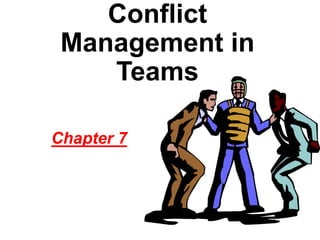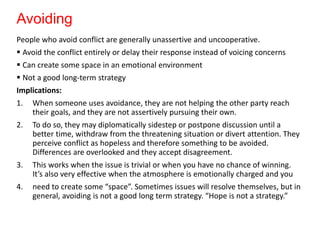This document provides an overview of conflict management in teams. It begins with learning objectives related to defining conflict, understanding where it comes from, and different categories and types of conflict. It then presents a case study about three typists, Fatima, Samina, and Razia, and asks the reader to rate their performance. Several tools for analyzing and managing conflict are introduced, including a conflict flow model consisting of 6 stages, a matrix for analyzing the impacts of different conflicts, a conflict tree for identifying causes and effects, and a PINs analysis table for understanding actors' positions, interests, and needs. The document concludes by describing five common conflict management strategies: avoiding, competing, compromising, accommodating, and collaborating







































